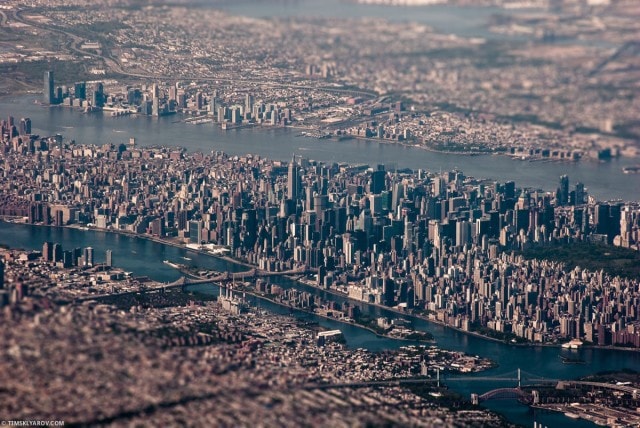Although my love affair with New York City started much earlier, I moved to NYC full-time in 1984. The city has changed a lot in those 30 years – some for the better and some, well, not for the better. That is the way of this city: always in motion and always changing.
The stream of double-decked tour buses in New York City indicates the incredible appeal that it has for tourists from around the world. And certainly there are the ‘must see’ sights and destinations so many of these visitors come to see.
I hope that they have life-altering experiences (like I did), spend a lot of money (great for the city revenue) and come back again. I will not however be reporting on the Statue of Liberty, the Empire State Building or the Magnolia Bakery – that I will leave to others.
Thankfully, there are still very special places, often hiding in plain view, that have not succumbed to the pressures exerted by the powerful real estate forces here. I am going to share some of my favorite places in a series of posts, starting today with two amazing spaces in Soho.
I was very fortunate to move to Spring Street & West Broadway in 1984, in the middle of Soho. This was a time when the neighborhood, as an art center, was reaching a fever pitch. Many now legendary icons of the art world abounded, with artists living and working alongside galleries. Donald Judd lived a few blocks away, and a few blocks further was Louise Nevelson. Leo Costelli, Illeana Sonnebend, and Mary Boone‘s gallery were 100 feet from my front door, and the list could go on and on.
West Broadway, looking south from Houston Street, circa 1970
Thankfully, there are still a few remnants of the early days of Soho as that era extant, and three of my favorites are hiding in plain view.
The two that I am going to share with you now are permanent installations supported by the Dia Art Foundation. Dia was founded in New York City in 1974 by Philippa de Menil, Heiner Friedrich, and Helen Winkler to help a small group of artists achieve visionary projects that might not otherwise be realized because of scale or scope.
The two works I want to share are by the artist Walter DeMaria (1935-2013) who produced Minimalist sculptures and Installations starting in the late 1960’s. He realized Land Art Projects in the deserts of the southwest United States, with the aim of creating situations where the landscape and nature, light and weather would become an intense, physical and psychic experience. In his work, DeMaria stressed that the work of art is intended to make the viewer think about the earth and its relationship to the universe.
“The Lightning Field” (1977) is DeMaria’s best-known work. It consists of 400 stainless steel posts arranged in a calculated grid over an area of 1 mile × 1 km. The time of day and weather change the optical effects. The field is commissioned and maintained by the Dia Art Foundation in New Mexico.
.
In the 1960s and 1970s Walter De Maria created enduring urban works, two of which are permanently installed in Soho, open to the public, and are free of charge.
For “The Broken Kilometer” (1979), De Maria meticulously arranged five hundred polished brass rods with two very simple industrial lights aimed into the very deep space at 393 West Broadway in Soho (the space is JUST south of Spring St.) On a typical Saturday tens of thousands of people walk past the massive storefront space in search of current fashion items without ever noticing it.
There are no large signs directing people to the site, rather, the very wide storefront has white frosted glass and a pair of glass doors with a simple title in small letters on the doors that look onto a blank wall, obstructing the view into the installation. It is a destination – and even with explicit instructions on where to look, and what to look for, the space is hiding in plain view.
I have been to see and experience “The Broken Kilometer” many times. It is extremely quiet, and often only one or two other people are in the vast space. The installation is startling in its simplicity – dramatic and sublime, offering a wonderful place for the mind to relax. The space is also a respite from the shoppers outside, like a cool church interior on a hot summer day; the experience is quite memorable, even if you don’t understand what it means.
.
A very short distance away is “The New York Earth Room” (1977), another installation by Walter DeMaria. It is on the second floor of what is now a residential loft building at 141 Wooster Street – just North of Spring. Press the buzzer and an attendant will buzz you in, where you need to walk up an old school Soho stairway.
The reward at the top is strange and wonderful. In stark contrast to the hard metal of “The Broken Kilometer” piece, “The New York Earth Room” is a 3,600-square-foot loft filled to a depth of 22 inches with 250 cubic yards of black earth.
It is a recreation of an installation DeMaria did at the Heiner Friedrich Gallery, and was subsequently installed in 1980 at 141 Wooster Street, New York as a permanent installation. I understand that the soil is watered, and raked to maintian a rich earthy aroma, and a level of humidity that keeps the soil black.
I highly recommend visiting both of these hidden treasure galleries. ‘The Broken Kilometer” and “The New York Earth Room” are open Wednesday through Sunday, noon -6pm (closed between 3 and 3:30) – admission is free.







